Volatility, Growth and Financial Crises
This research group analyses the build-up of financial vulnerabilities and real consequences of financial crises. Different policy shocks and the causal reaction of macroeconomic aggregates are identified. Early-warning models describe the cyclical nature of financial vulnerabilities.
IWH Data Project: Financial Stability Indicators in Europe
Research Cluster
Financial Resilience and RegulationYour contact

- Department Macroeconomics
EXTERNAL FUNDING
01.2022 ‐ 12.2023
Sovereign Risk Shocks
05.2017 ‐ 09.2019
Early Warning Models for Systemic Banking Crises: The Effect of Model and Estimation Uncertainty
01.2018 ‐ 12.2018
International Monetary Policy Transmission
Refereed Publications

Extreme Risks in Financial Markets and Monetary Policies of the Euro-candidates
in: Comparative Economic Studies, No. 4, 2011
Abstract
This study investigates extreme tail risks in financial markets of the euro-candidate countries and their implications for monetary policies. Our empirical tests show the prevalence of extreme risks in the conditional volatility series of selected financial variables, that is, interbank rates, equity market indexes and exchange rates. We argue that excessive instability of key target and instrument variables should be mitigated by monetary policies. Central banks in these countries will be well-advised to use both standard and unorthodox (discretionary) tools of monetary policy while steering their economies out of the financial crisis and through the euro-convergence process.
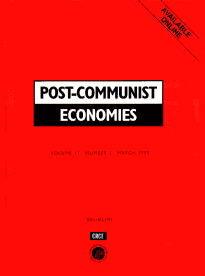
Central and Eastern European Countries in the Global Financial Crisis: A Typical Twin Crisis?
in: Post-Communist Economies, No. 4, 2011
Abstract
This paper shows that during the Great Recession, banking and currency crises occurred simultaneously in Central and Eastern Europe. Events, however, differed widely from what happened during the Asian crisis that usually serves as the model case for the concept of twin crises. We look at three elements that help explaining the nature of events in Central and Eastern Europe: the problem of currency mismatches, the relation between currency and banking crises, and the importance of multinational banks for financial stability. It is shown that theoretical considerations concerning internal capital markets of multinational banks help understand what happened on capital markets and in the financial sector of the region. We discuss opposing effects of multinational banking on financial stability and find that institutional differences are the key to understand differing effects of the global financial crisis. In particular, we argue that it matters if international activities are organized by subsidiaries or by cross-border financial services, how large the share of foreign currency-denominated credit is and whether the exchange rate is fixed or flexible. Based on these three criteria we give an explanation why the pattern of the crisis in the Baltic States differed markedly from that in Poland and the Czech Republic, the two largest countries of the region.
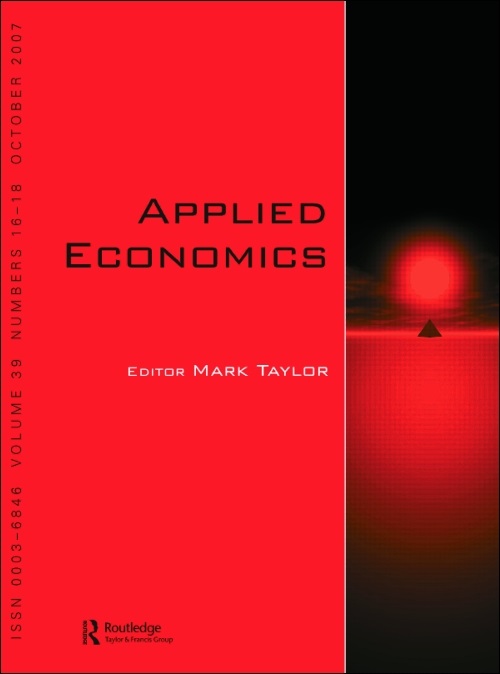
Inflation and Relative Price Variability in the Euro Area: Evidence from a Panel Threshold Model
in: Applied Economics, No. 4, 2012
Abstract
The impact of inflation on Relative Price Variability (RPV) generates an important channel for real effects of inflation. This article provides first evidence on the empirical relation between inflation and RPV in the euro area. Stirred by the widespread use of inflation caps or target bands in monetary policy practice, we are particularly interested in threshold effects of inflation. In line with the predictions of monetary search models, our results indicate that expected inflation significantly increases RPV only if inflation is either very low (below 0.95% per annum (p.a.)) or very high (above 4.96% p.a.).

Interest Rate Convergence in the Euro-Candidate Countries: Volatility Dynamics of Sovereign Bond Yields
in: Emerging Markets Finance and Trade, 2010
Abstract
We argue that a “static“ specification of the Maastricht criterion for long-term bond yields is not conducive to assessing stability of financial systems in euro-candidate countries. Instead, we advocate a dynamic approach to assessing interest rate convergence to a common currency that is based on the analysis of financial system stability. Accordingly, we empirically test volatility dynamics of the ten-year sovereign bond yields of the 2004 EU accession countries in relation to the eurozone yields during the January 2, 2001-January 22, 2009, sample period. Our results show a varied degree of the relationship between domestic and eurozone sovereign bond yields, the most pronounced for the Czech Republic, Slovenia, and Poland, and weaker for Hungary and Slovakia. We find some divergence of relative bond yields since the EU accession.

A Cost Efficient International Lender of Last Resort
in: International Research Journal of Finance and Economics, 2010
Abstract
The current reform of the International Monetary Fund’s (IMF) lending instruments has transformed the Fund towards an international lender of last resort (ILOLR). Current research discusses various general frameworks for installing an ILOLR. However, it remains unclear how the ILOLR should actually operate. This paper discusses six different options for the construction of an ILOLR that supports central banks during currency crises. The paper concludes that the most cost efficient version of the ILOLR would be direct intervention by the IMF using IMF resources, with the option of using additional reserves from central banks. The paper considers measures of cost efficiency, such as cost of borrowing, intervention, and sterilization and moral hazard problems.
Working Papers

Risky Oil: It's All in the Tails
in: NBER Working Paper, No. 32524, 2024
Abstract
<p>The substantial fluctuations in oil prices in the wake of the COVID-19 pandemic and the Russian invasion of Ukraine have highlighted the importance of tail events in the global market for crude oil which call for careful risk assessment. In this paper we focus on forecasting tail risks in the oil market by setting up a general empirical framework that allows for flexible predictive distributions of oil prices that can depart from normality. This model, based on Bayesian additive regression trees, remains agnostic on the functional form of the conditional mean relations and assumes that the shocks are driven by a stochastic volatility model. We show that our nonparametric approach improves in terms of tail forecasts upon three competing models: quantile regressions commonly used for studying tail events, the Bayesian VAR with stochastic volatility, and the simple random walk. We illustrate the practical relevance of our new approach by tracking the evolution of predictive densities during three recent economic and geopolitical crisis episodes, by developing consumer and producer distress indices that signal the build-up of upside and downside price risk, and by conducting a risk scenario analysis for 2024.</p>
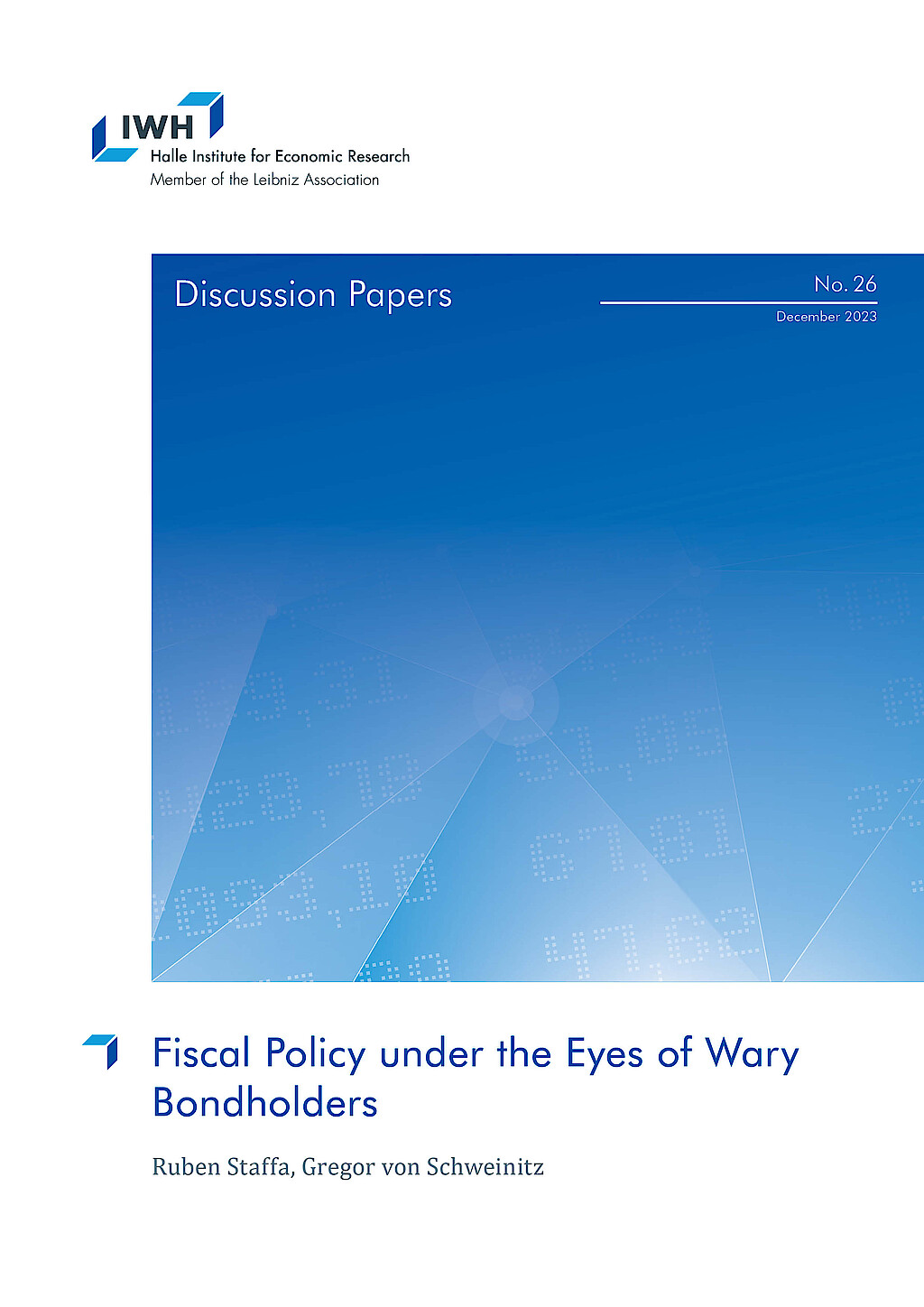
Fiscal Policy under the Eyes of Wary Bondholders
in: IWH Discussion Papers, No. 26, 2023
Abstract
This paper studies the interaction between fiscal policy and bondholders against the backdrop of high sovereign debt levels. For our analysis, we investigate the case of Italy, a country that has dealt with high public debt levels for a long time, using a Bayesian structural VAR model. We extend a canonical three variable macro mode to include a bond market, consisting of a fiscal rule and a bond demand schedule for long-term government bonds. To identify the model in the presence of political uncertainty and forward-looking investors, we derive an external instrument for bond demand shocks from a novel news ticker data set. Our main results are threefold. First, the interaction between fiscal policy and bondholders’ expectations is critical for the evolution of prices. Fiscal policy reinforces contractionary monetary policy through sustained increases in primary surpluses and investors provide incentives for “passive” fiscal policy. Second, investors’ expectations matter for inflation, and we document a Fisherian response of inflation across all maturities in response to a bond demand shock. Third, domestic politics is critical in the determination of bondholders’ expectations and an increase in the perceived riskiness of sovereign debt increases inflation and thus complicates the task of controlling price growth.
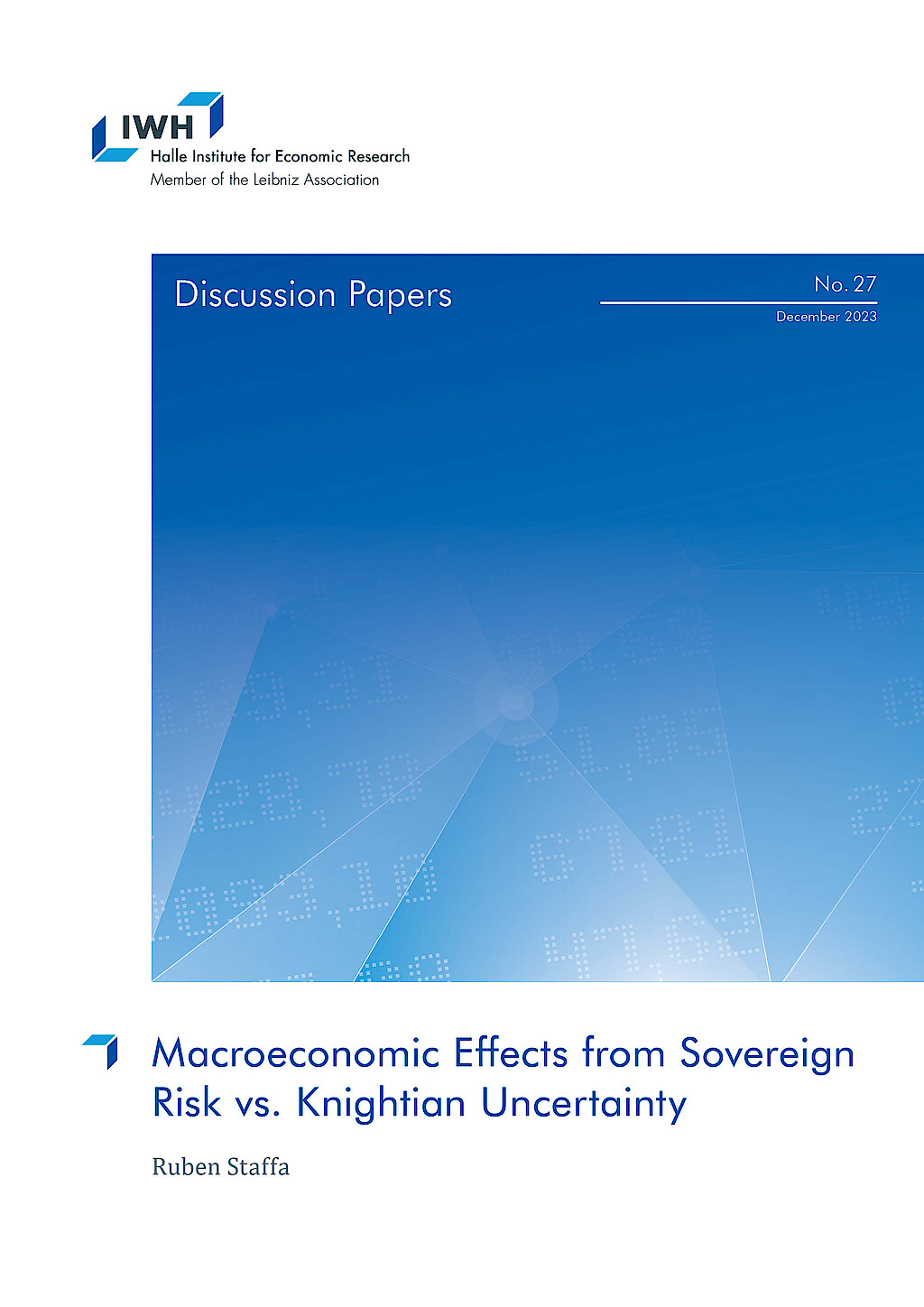
Macroeconomic Effects from Sovereign Risk vs. Knightian Uncertainty
in: IWH Discussion Papers, No. 27, 2023
Abstract
This paper compares macroeconomic effects of Knightian uncertainty and risk using policy shocks for the case of Italy. Drawing on the ambiguity literature, I use changes in the bid-ask spread and mid-price of government bonds as distinct measures for uncertainty and risk. The identification exploits the quasi-pessimistic behavior under ambiguity-aversion and the dealer market structure of government bond markets, where dealers must quote both sides of the market. If uncertainty increases, ambiguity-averse dealers will quasi-pessimistically quote higher ask and lower bid prices – increasing the bid-ask spread. In contrast, a pure change in risk shifts the risk-compensating discount factor which is well approximated by the change in bond mid-prices. I evaluate economic effects of the two measures within an instrumental variable local projection framework. The main findings are threefold. First, the resulting shock time series for uncertainty and risk are uncorrelated with each other at the intraday level, however, upon aggregation to monthly level the measures become correlated. Second, uncertainty is an important driver of economic aggregates. Third, macroeconomic effects of risk and uncertainty are similar, except for the response of prices. While sovereign risk raises inflation, uncertainty suppresses price growth – a result which is in line with increased price rigidity under ambiguity.
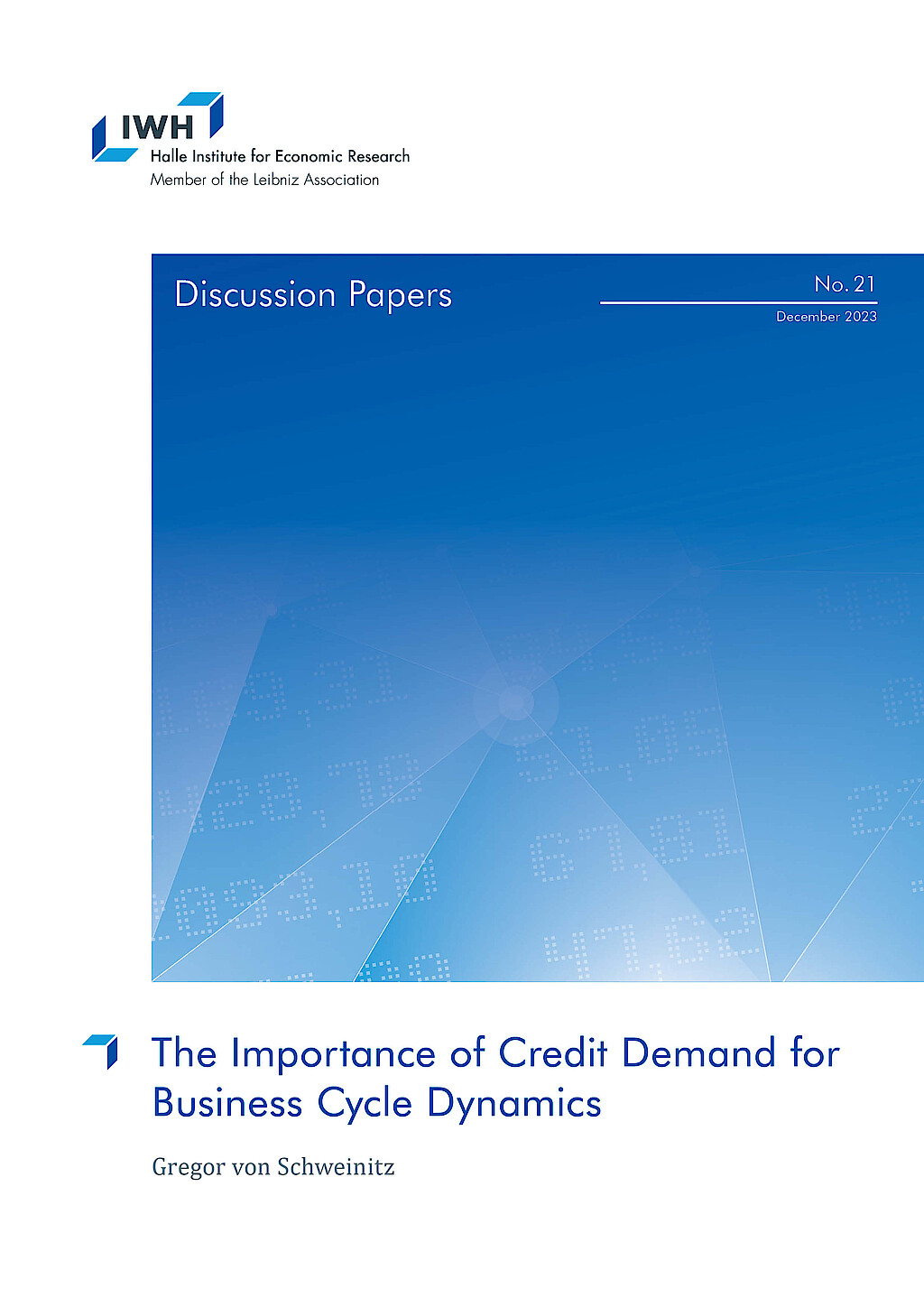
The Importance of Credit Demand for Business Cycle Dynamics
in: IWH Discussion Papers, No. 21, 2023
Abstract
This paper contributes to a better understanding of the important role that credit demand plays for credit markets and aggregate macroeconomic developments as both a source and transmitter of economic shocks. I am the first to identify a structural credit demand equation together with credit supply, aggregate supply, demand and monetary policy in a Bayesian structural VAR. The model combines informative priors on structural coefficients and multiple external instruments to achieve identification. In order to improve identification of the credit demand shocks, I construct a new granular instrument from regional mortgage origination. <br />I find that credit demand is quite elastic with respect to contemporaneous macroeconomic conditions, while credit supply is relatively inelastic. I show that credit supply and demand shocks matter for aggregate fluctuations, albeit at different times: credit demand shocks mostly drove the boom prior to the financial crisis, while credit supply shocks were responsible during and after the crisis itself. In an out-of-sample exercise, I find that the Covid pandemic induced a large expansion of credit demand in 2020Q2, which pushed the US economy towards a sustained recovery and helped to avoid a stagflationary scenario in 2022.

Uncovering Disaggregated Oil Market Dynamics: A Full-Information Approach to Granular Instrumental Variables
in: Working Paper, 2023
Abstract
<p>The world price of oil is determined by the interactions of multiple producers and consumers who face different constraints and shocks. We show how this feature of the oil market can be used to estimate local and global elasticities of supply and demand and provide a rich set of testable restrictions. We develop a novel approach to estimation based on full-information maximum likelihood that generalizes the insights from granular instrumental variables. We conclude that the supply responses of Saudi Arabia and adjustments of inventories have historically played a key role in stabilizing the price of oil. We illustrate how our structural model can be used to analyze how individual producers and consumers would dynamically adapt to a geopolitical event such as a major disruption in the supply of oil from Russia.</p>














